The morning we wake up in N’gorankro, it seems the kids are waiting for us. The same crowd as yesterday evening is here, under the porch of the house of the chief. We are first offered a warm bucket of water, a treat. And a breakfast in the dining room of the chief, where a poster of the atrocities and torture under Gbagbo is displayed on the wall. With pictures … that is a lot of blood for breakfast.
Then, the discussion resumes. The parents whose kids have never seen white skin tell them to come and shake our hands. Many are scared and there is no going back: the crowd is so packed around us it is difficult to escape. One mother drops her daughter in the middle of the “white arena”, and the little girl, quickly understanding she cannot escape, hides her eyes and cries out loud. The daughter of the chief manages to climb chairs and people to go around.

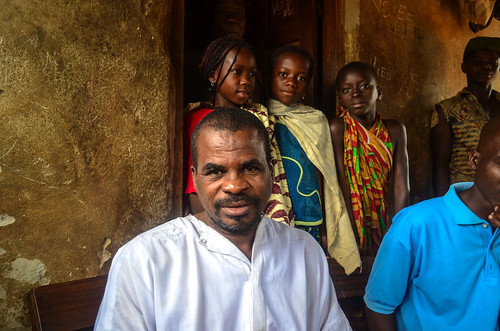
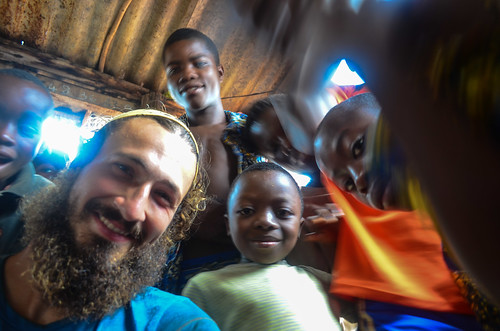
On the other hand, seeing our cameras, young boys are attracted and like taking poses.
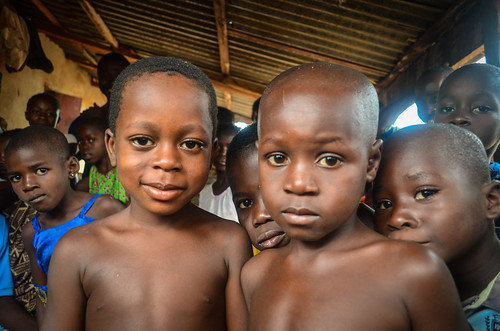


After a goodbye with our wonderful hosts, the road to Vavoua is another 40 kilometers of sand piste and water pools. The straightest option from Kouibly to Vavoua is definitely not the fastest.
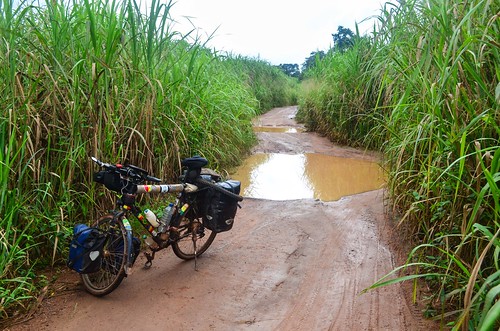
On the road, a bicycle man is shouting “Blanco!“. It is not the same “Branco!” as in Guinea-Bissau to designate White people, blanco is the name of the palm wine in Ivory Coast. He cycles on an old rusty bicycle with a big yellow jerrycan on the rear rack, distributing big cups of wine. His is much better than the one I had tried in Liberia. Apparently, blanco is only good in villages as it is fresh, and it becomes rare (and worse) in the cities.
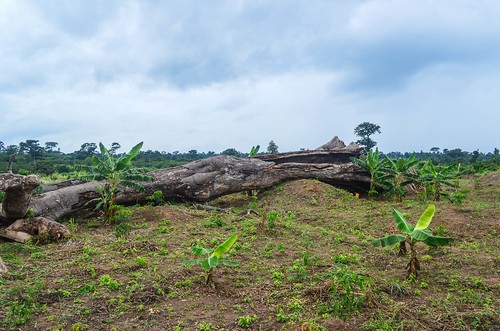
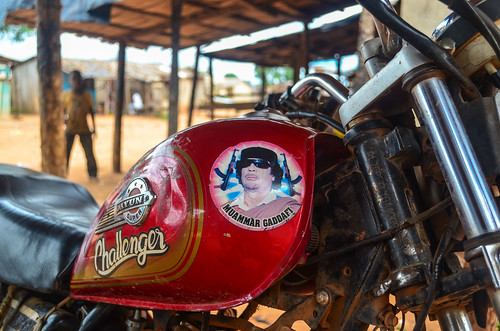
There are still many army checkpoints. They seem more present in the countryside than on the main paved roads. Some say hi without stopping us, others request our ID as a pretext to chat. They said they saw 4 cyclists passing here before.
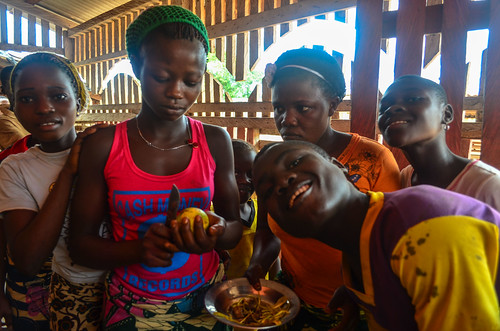
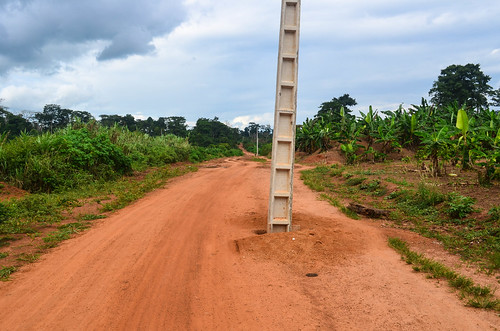
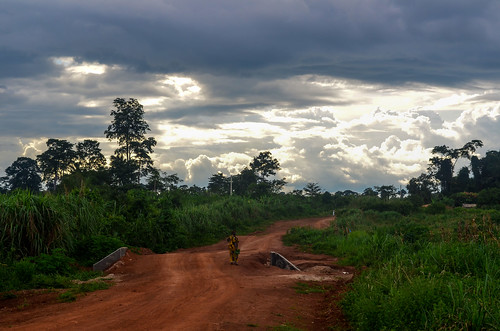

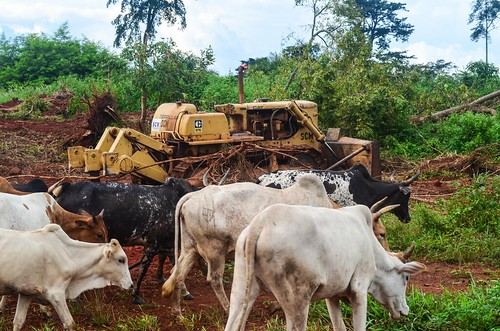
At the end of the piste, we eventually reach Vavoua. It makes a mere 50 kilometers but we are tired enough to call it a day. Just in front of the city hall, Jacques and his associate stop in his 4×4. He is a sous-préfet and invites us for dinner.
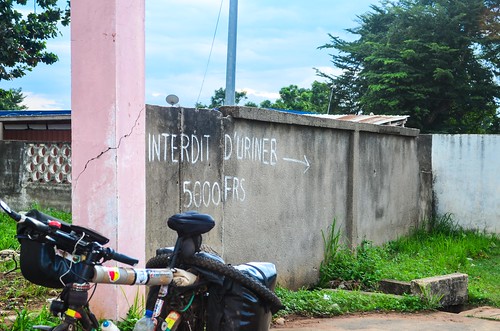
They cook good food and the long discussion teaches us that 2 persons got killed last week in the forest we just passed through. Apparently, despite being a protected forest, there is no protection at all and wood-logging goes on. Some people have even started plantations inside. The killings were related to illegal business between Burkinabés and large sums of money involved. And since the forest is a lawless area …
Also, the reason for the many checkpoints is because when the war started, weapons were distributed without real control. It is now almost impossible to collect them back. And since there is actually no pay for the army, it is better to let them make their money with random checkpoints/racket on the roads.
He also says we are among the first civilians he sees after the war, most of the foreigners here being sent within the military or the UN.
After another good lunch with Jacques the next day, we set off Vavoua.
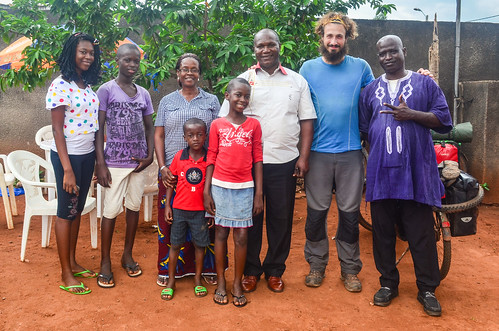
The weather is rather dry for a rainy season. Johannes leaves for Daloa while I continue on another dirt track to Zuenoula. The road paradox goes on, so now I am where the roads and infrastructure are good, it feels almost boring to stick to the asphalt and I escape for more dirt tracks. But the scenery is always better when the road ahead of me is red and not paved.

Despite leaving late in the afternoon, I almost make the 60 kilometers to Zuenoula on the red piste. When the beautiful light of the sunset (my favorite time to ride) slowly disappears, I start to consider the villages nearby to spend the night.
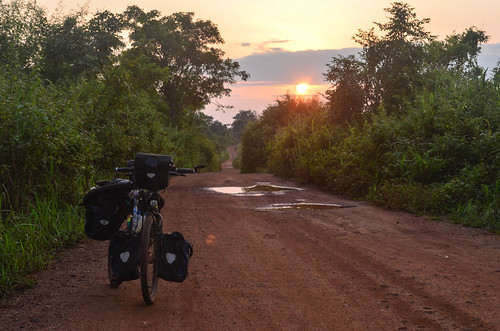
The first trial is wrong, people brutally surround me to ask what I bring to them. Just when I was about to say that Ivorians are the nicest and most interesting people so far. The second trial is no better: the chief seems drunk and his first words are for asking for cigarettes. I don’t know if Sunday is a drinking day, or if this region is just not as nice as before, but I’d rather continue to Zuenoula and find a hostel for the night. I finish the last kilometers at night with groups of motorbikers passing me fast, making me rush to the city lights. In the end, I managed a pretty good average of 15 km/h for 4 hours without asphalt.
I finally make it there and it looks creepy: low lights, few people in the large streets and deserted food stalls. No smiles or salutations, so after dinner I stick to my hotel room until the morning. Day and night are two different worlds.
After some picture processing in my room, I leave for Bouaflé. It is not such a long way, and paved, so it should be quick. It is better being quick, as I was again warned against cycling at night on this road. I always prefer roads without traffic, but those are also the roads preferred by the robbers.
There is another UN Bangladeshi camp at the exit of Zuenoula, and nothing much until the end of the day. I have quiet plantations and my right and left until Bouaflé.
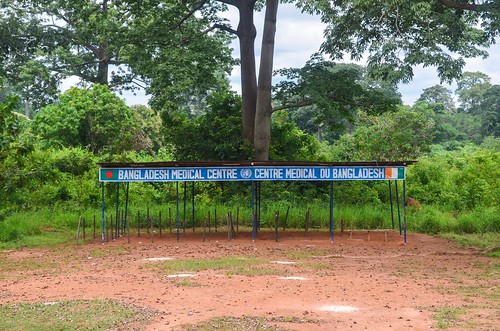
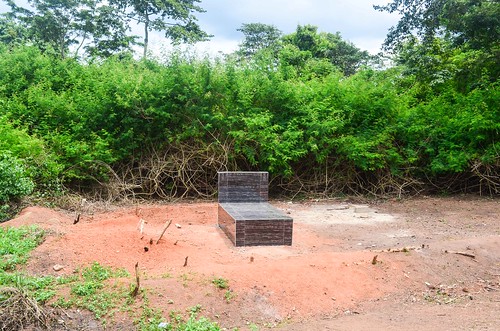

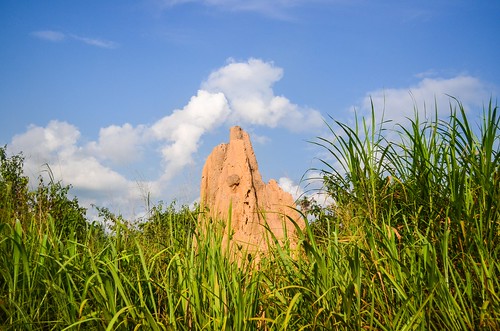

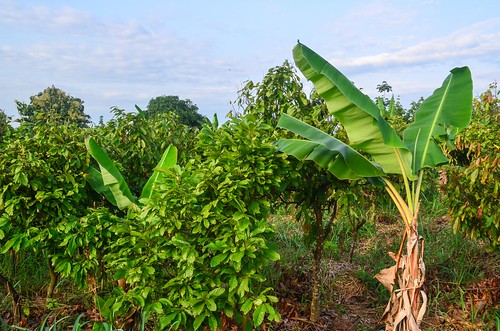
Bouaflé is lively and it looks like the people are friendly again. I make new friends introducing me to banana fufu. I thought it was only from yam or kassava, but apparently the real Ivorian fufu is made from bananas (plantains). And since Jonas works at the Solibra factory of Bouaflé, which bottles most of the beers sold in the country (Bock, the national one, plus licensed beers), we get a degustation and an explanation of which country drinks the most.
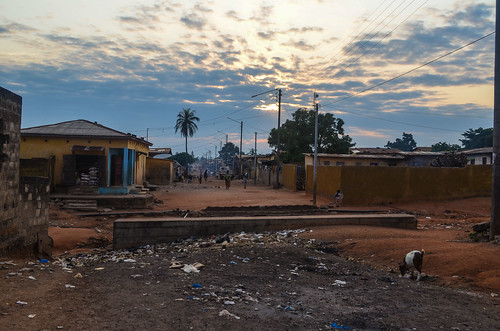
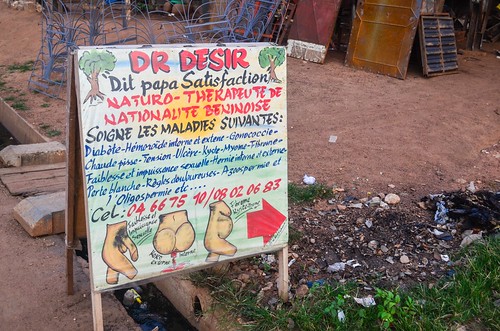
As my legs were tired already from the morning, and still are, I decided to cycle until Yamoussoukro, another 80 km, and rest there for a few days. Another broken spoke and a plate of attiéké and fish later, and I am ready for more dirt track. I avoid the main road to the capital by taking a longer one, unpaved and without traffic, going over the Kossou dam, which construction formed the Kossou lake, the largest of Ivory Coast.
The road is nice (for sure I prefer red and oranges roads to the grey asphalted ones) but I never get to see the lake until I actually reach it. The piste rolls on the hills, up and down, never letting me see further than a kilometer.
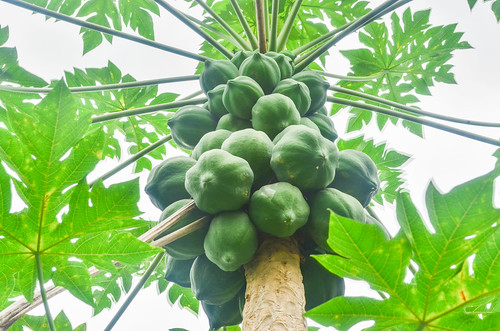
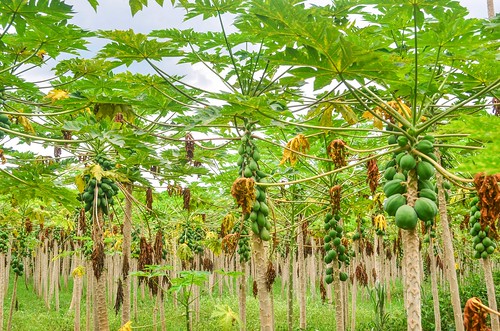
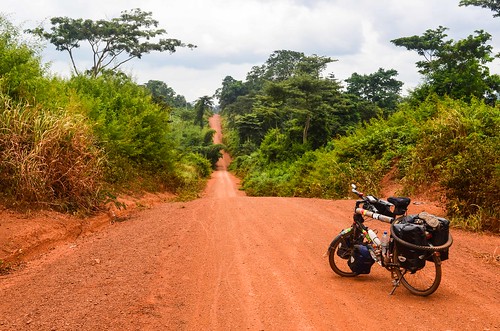
There is a gold mine just before arriving to the dam, currently out of operation. The lake is just after.
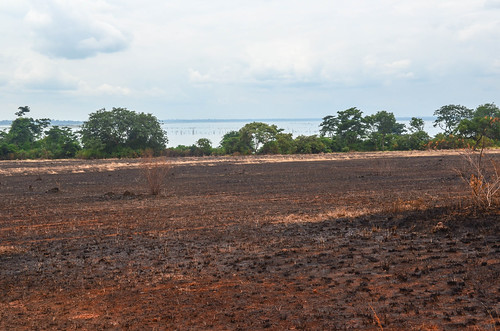
Within the vicinity of the dam, as I pull my camera out, I am stopped by the armed guards, from the army. All pictures around the dam are prohibited, even pictures of the lake. To make sure I don’t try, the boss follows me on his motorbike all along the 1500 meters of the dam until I get out of sight. The dam, stuffed with big stones, was built in 1973 by Impregilo Italia (who seems to have built many of the major dams in Africa) and still looks good. The only picture I have is the aerial view on the sign on the Yamoussoukro-Bouaflé road.
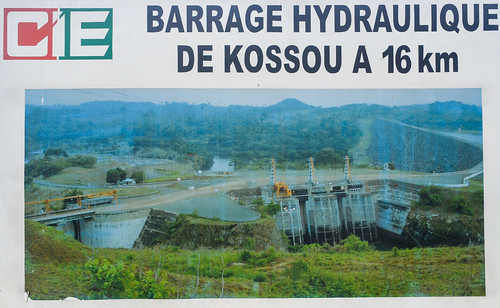
More than 80’000 inhabitants were relocated when the Bandama river gave birth to the lake Kossou, which has a maximum length of 180 km and a maximum width of 45 km. The dam is 58 m high, 235 m wide at its base, and powers the 176 MW (3×60 MW) turbines in the plant on the left bank.

The end of the road is eventless until Yamoussoukro. I had to brake during a descent to see what the arms out of the roadside plantation were handing out: a big rat, freshly killed in the field. Only 1000 CFA (1.5 €) for more meat than there is on a chicken leg.

I know when I am about to enter Yamoussoukro when I see the dome of the basilica above the trees, more than 7 kilometers ahead. The road to the capital has no crazy traffic like into a real capital city, as this must have remained in Abidjan, like the embassies and the factories. Yamoussoukro is a ghost capital, with large lanes but no traffic.
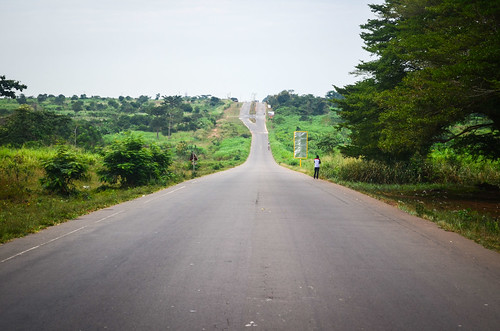
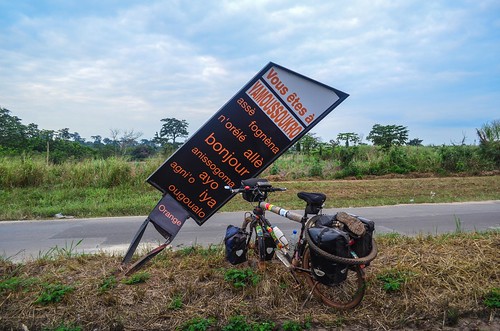
Thus, the entrance into the town is very pleasant: very large lanes and no one on it. The parking of the basilica is empty. It is still a few kilometers to reach the proper center.
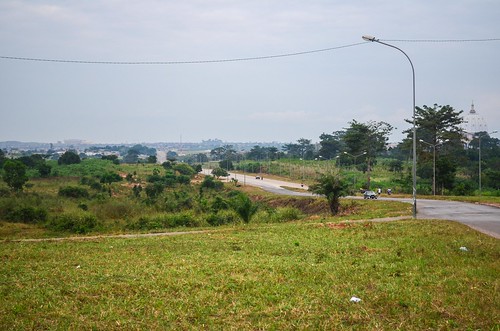
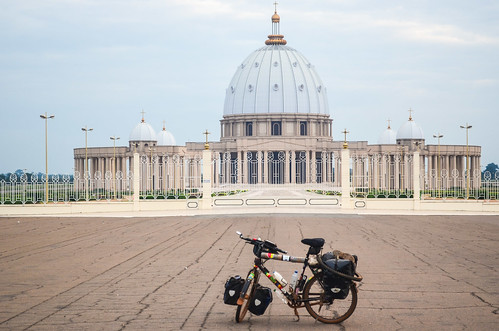

Once in the center, just there lies the presidential palace and the lake of the caimans. The city, and everything inside it, was built by the first president of the country, Félix Houphouët-Boigny. He had caimans in the lake of the presidential palace, which is just outside the walls. I was told that since his death in 1993, the caimans have not been fed properly. As a result, they ate the caretaker, they ate the second caretaker, and also a young man who were trying to recover his cellphone dropped in the lake.
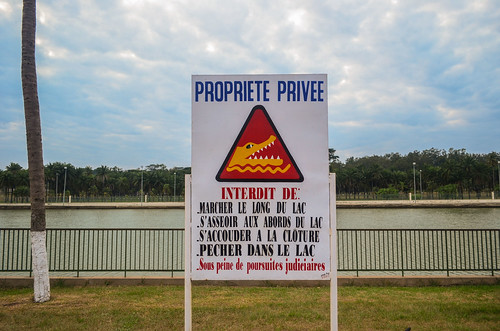
Now, the lake is fenced and the signs forbid the curious minds to get too close or to stay too long. I just went to have a look to see if those caimans are for real …

Yamoussoukro is called the city of lights. “It is like Paris“, I had heard. They say Yamoussoukro has 10’000 streetlights.
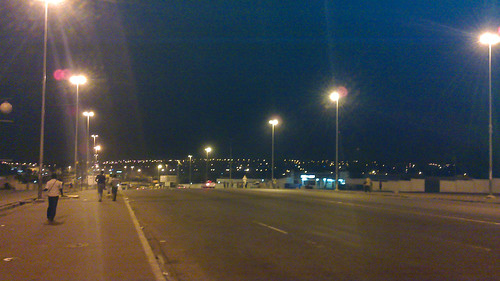
I stay in the pleasant center, the only lively area, within too many food stalls and no crazy traffic at all. One more thing could be like Paris … the bread and the pastries. After Liberia and its bread tasting like a sweet brioche, I am back to real bread, baguettes, pains aux raisins, etc.







Hi JB,
Hoping you are well, your great photos have taken me back to Africa life 🙂 Anyways, since you are already in Ivory Coast, I remind you that you can look for Traboulsi also there and you will find my cousins but also more certainly you can look for thsi guy Husein Shakaroun (photography business), and you tell him that you know Marwan Traboulsi, I have not seen him in 23 years but see what happens 🙂
All the best and as always do take care!
Marwan
I didn’t go down until Abidjan and stay in the central part of the country … do you have family even more south between cameroon and namibia?